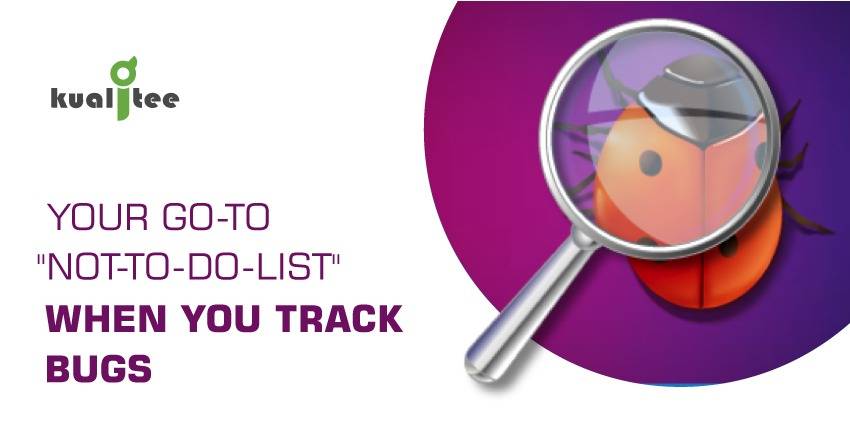Tracking bugs effectively is definitely hard and crucial work. A slight mistake has the potential to take the whole project down. Therefore, this whole process requires a lot of care and attention. Testers use different kind of issue tracking tools to detect bugs. The choice of the tool depends on many factors but the quality of the testing also highly depends on the skills of the tester. Hence, while tracking bugs there are certain things which are very important to take into account. In this blog, we will give you an important list of things which you should not do while tracking bugs. Give a read to the following not-to-do list and you’ll detect the bugs like a boss.
Here you go:
Don’t Confuse Bugs with Other Issues
When we are detecting bugs in a project, we come across many issues which we think of as bugs. However, sometimes we are just confusing other errors or issues of software with bugs. This confusion can create a lot of trouble for the developers as they will falsely put their efforts to debug something which was not a bug at all in the first place. Therefore, to deliver an accurate bug report is very important. This brings us to the next point that emphasizes about the importance of bug reports.
Never Bug Reports for Granted
“Face is the index of mind”, they say. This refers to the fact that the title of your report is very important. Always write a short and precise title. You should explain what you are going to write in the report. It decides the fate of the bugs in a way that the developers have a firsthand idea of the report from the title. Another very important thing to focus on while writing a bug report is the comprehensiveness of your report. Write it in a straightforward and precise manner to avoid any confusions. Always remember that your report is going to decide the fate of your products’ quality. Moreover, if not written precisely, it will raise questions about your abilities.
Don’t Confuse Priorities with Severities
In order to set your priorities straight while detecting bugs, you should know the severity of the bug. It’s important that you should not confuse both of these things. Here are some of the questions which will help you to figure things out.
- Is the bug affecting any core function of the software or app?
- Is it going to affect the client’s demand?
- Is it just cosmetic?
- Is it blocking test cases? If yes, then how many?
- If you launch the project with the intact bug, will it affect the customer or your business?
If you will ask these questions to yourself, it will help you to understand the severities and priorities in a better way.
Don’t Mix Facts with Opinions
It is natural that we want to give our suggestions on issues which we detect ourselves. In the case of detecting bugs, your opinions can confuse developers. So, avoid sharing your opinions freely. All you have to do is to provide the developers with the facts. It will help them to create a strategy to debug the bugs in a better way because they have developed the software or app themselves.
Don’t Forget to Log Unimportant Bugs
It doesn’t matter if you think that the bugs are harmless and bear no potential threat to the product, you have to log them in any case. It is very important for the developer to know about every single bug there is.
Time to Dive In
Just keep the aforementioned tips in mind while detecting bugs and you are all set to contribute your part in making an excellent product.


























